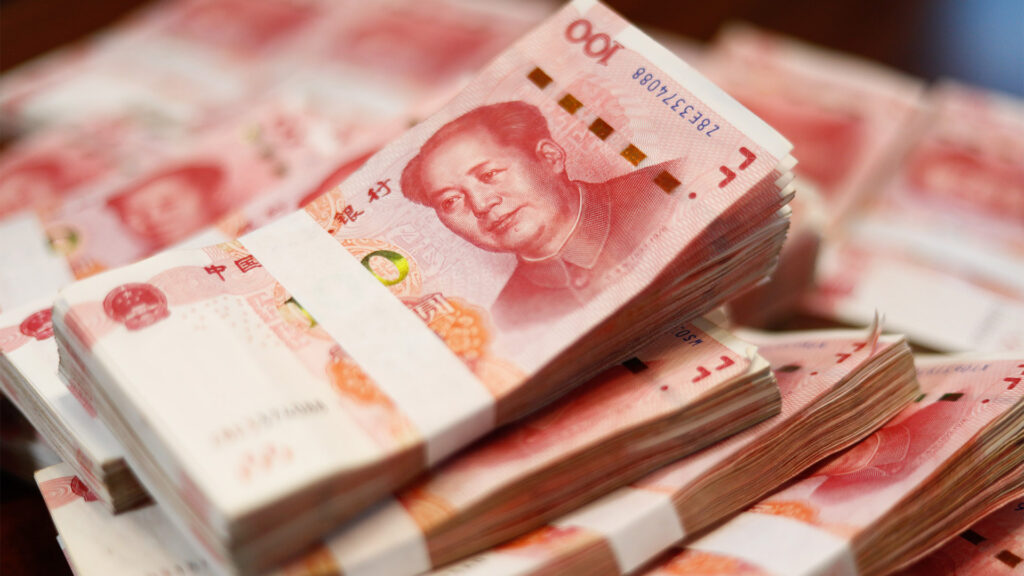For the second time in a week, China has left investors questioning what the term “stimulus” really means.
On Saturday, China’s finance ministry unveiled a fiscal stimulus package filled with vague ideas aimed at reviving the stagnating economy, yet again failing to disclose the size, scope, and timing of the new measures.
Five days earlier, China’s main planning body held a media conference promising monetary policy changes, such as lower mortgage rates, suggesting some spending, but ultimately dampened an excited stock market rally in less than a day.
During Saturday’s press conference, the ministry announced it would “significantly” increase government debt issuance to provide subsidies to low-income households, support the property market, and replenish state banks’ capital as part of efforts to jumpstart economic growth.
These briefings followed the central bank and other regulators’ announcement on September 24 of the most aggressive monetary stimulus measures since COVID-19, including steps to revive the ailing property market, such as mortgage rate cuts.
Reuters reported last month that China plans to issue special sovereign bonds worth about 2 trillion yuan ($283 billion) this year as part of a fresh fiscal stimulus.
Last week, the government confirmed the establishment of two funds to enable companies to engage in repo deals to raise financing, focusing on banks, insurance companies, and property groups. A smaller second fund would assist other companies in raising funds during times of stress.
Among the measures outlined by Finance Minister Lan Fang at Saturday’s news conference were:
China will increase support for local governments to address hidden debt risks from property, enhancing their capacity to support the economy. The government has allocated 1.2 trillion yuan ($169.81 billion) in local bond quotas this year to help resolve existing hidden debts and settle government arrears to firms.
China plans a large-scale debt swap program, alongside continued use of bond quotas for debt resolution, described as the “biggest” policy measure in recent years. Detailed policies will be announced after the necessary legal procedures are completed.
The government will expand the use of local government bond proceeds to support the property market and recapitalize large state-owned banks. Special treasury bonds will be issued to bolster the core Tier-1 capital of major state-owned commercial banks, improving their ability to withstand risks and provide credit to the real economy.
Local governments will be allowed to use special bonds to purchase unused land, enhancing their ability to manage land supply and alleviating liquidity and debt pressures on both local governments and property developers.
China will also support the purchase of existing commercial housing for use as affordable housing and will continue funding affordable housing projects, a policy measure first announced earlier this year.
The government will increase support for low-income individuals and students to boost consumption. The number of national scholarships for undergraduates will be doubled from 60,000 to 120,000 annually, with the value of each scholarship rising from 8,000 yuan to 10,000 yuan per student per year.
Lan also noted that the central government has “relatively large room” to raise debt and increase the budget deficit, though he did not provide specifics.
China has set this year’s budget deficit at 3% of GDP, down from a revised 3.8% last year. The issuance of 1 trillion yuan in special ultra-long treasury bonds this year is not included in the budget. Local governments will issue 3.9 trillion yuan in special bonds in 2024, compared to 3.8 trillion yuan last year.
While that sounds substantial, the actual amount of new money is relatively modest at 1.1 trillion yuan. Western analysts believe that after the cut in the estimated deficit for this year, there will be little to no new money.
The immediate reaction from investors was negative. Reuters reported that those hoping to hear specific details about government spending were disappointed by the briefing.
“The strength of the announced fiscal stimulus plan is weaker than expected. There’s no timetable, no amount, and no details on how the money will be spent,” said Huang Yan, investment manager at Shanghai QiuYang Capital Co.
Huang had anticipated more stimulus to boost consumption, as market analysts were looking for a spending package between 2 trillion yuan and 10 trillion yuan ($283 billion to $1.4 trillion).
“If this is all we have in terms of fiscal policies, the stock market bull run could lose momentum,” Huang stated.
This sentiment was echoed by the CSI 300 index, which fell 2.77% on Friday, while the Shanghai Composite lost 2.55%.
Several analysts noted the ongoing lack of direct support for households and consumers.
“Investors will need to be patient,” said HSBC’s chief Asia economist, Fred Neumann, noting that concrete numbers could emerge only by the end of the month when the Standing Committee of the National People’s Congress reviews and votes on specific proposals.
Jason Bedford, a former China analyst at Bridgewater and UBS, pointed out that Lan’s commitment to recapitalize major state banks suggests authorities expect a revival in credit demand.
“But the only way the economy needs more credit is if you create credit demand, which can only be done by providing fiscal support.”
Meanwhile, data on September quarter growth and monthly figures on inflation, trade, car sales, production, investment, and retail sales will be released this week.

